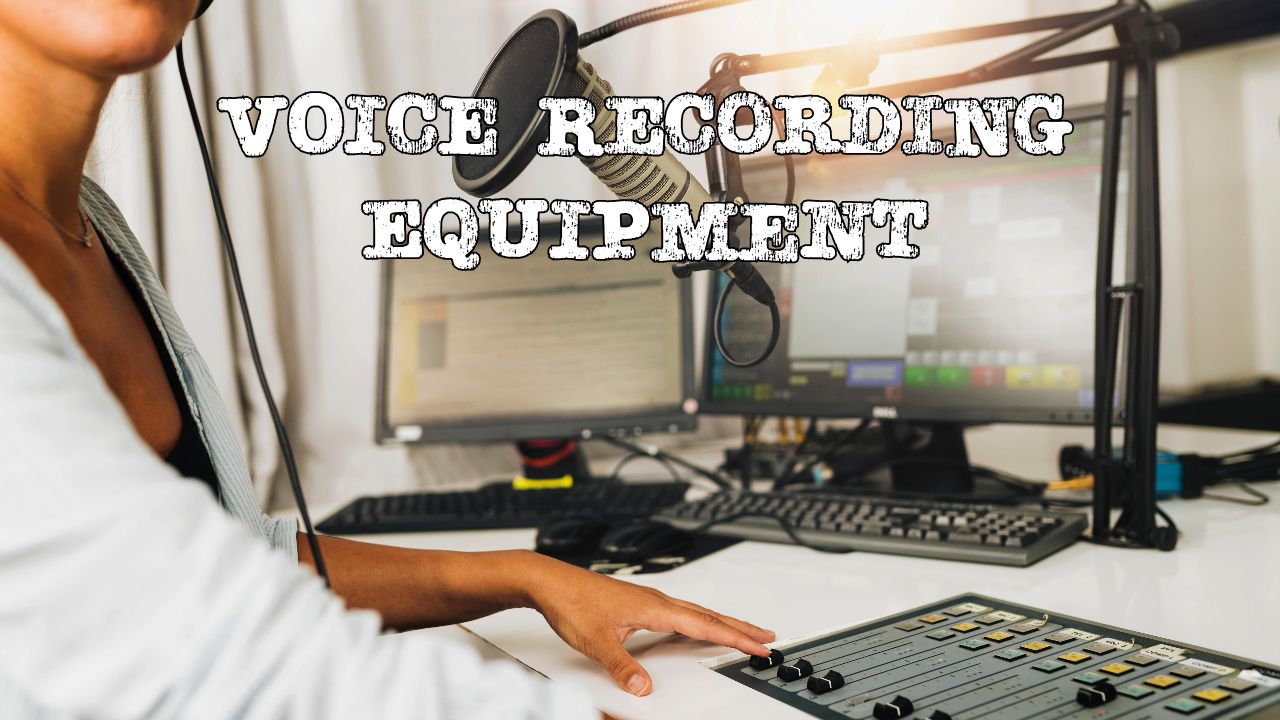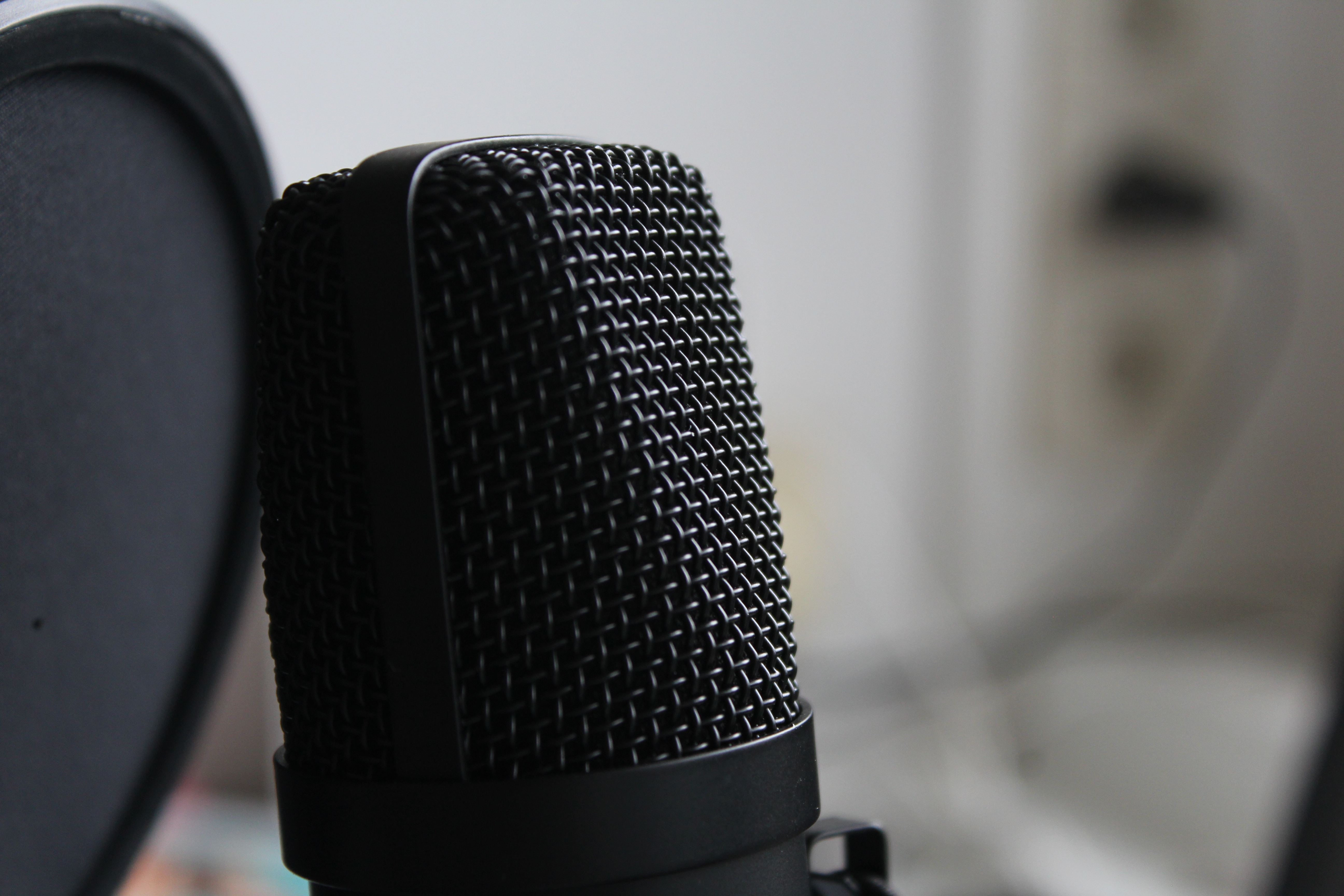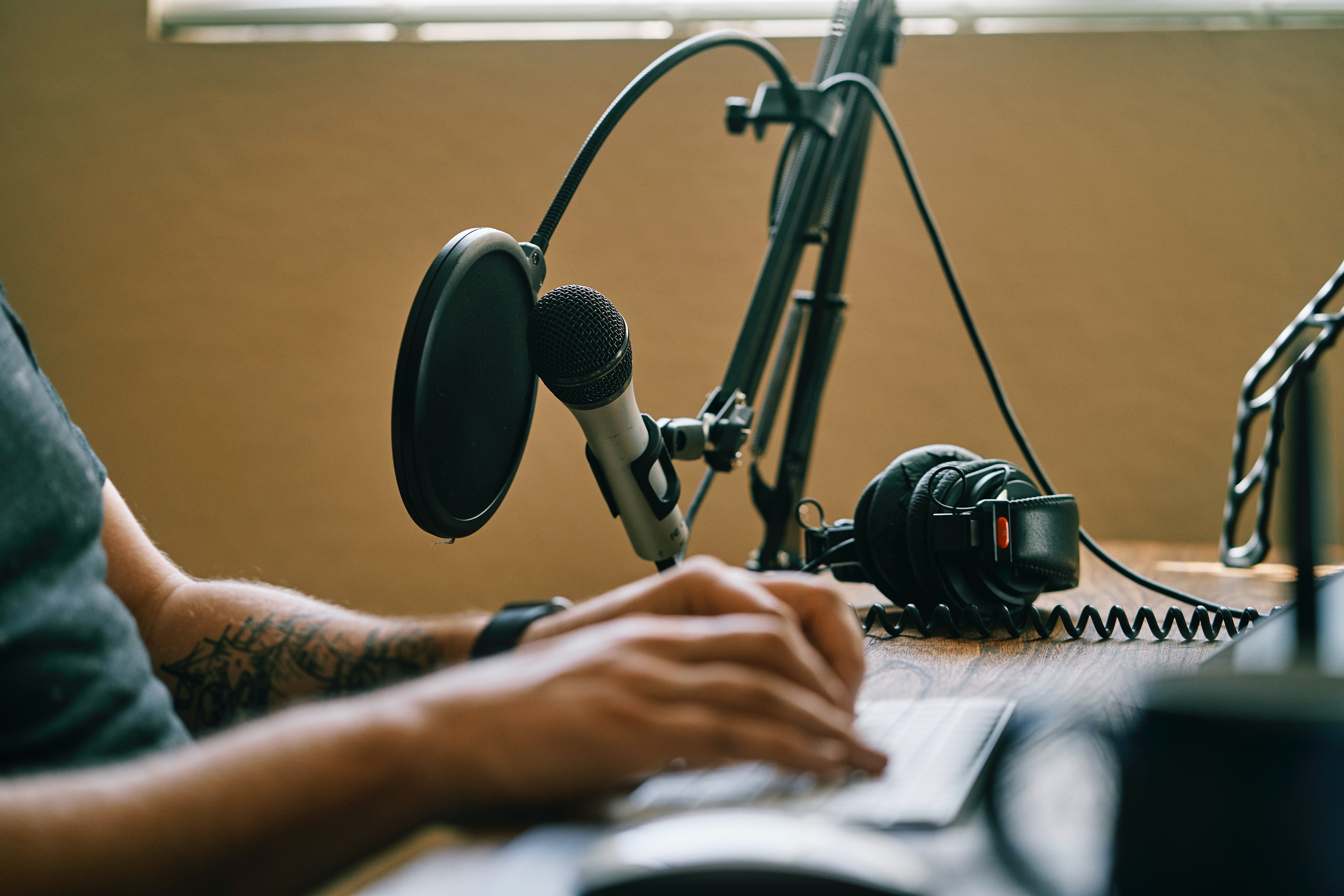The Beginner’s Guide to Voice Recording Equipment
Sep 20, 2023
Everything You Need to Put Together A Top-Notch Home Recording Studio
Whether you’ve ever dreamt of lending your voice to cartoons, video games, or commercials, now’s the perfect opportunity to dive in and understand the basics, because, in the golden age of content, voice acting isn’t just about having that melodious or quirky voice — it's about knowing how to capture it with precision.
And for that, understanding — and owning — voice recording equipment is more than just a "nice-to-have"... it's a must-have.
So, if you're chasing those big gigs or dreaming about setting up that personal studio at home, knowing your tools — from mics to mixers — can make your life smoother than a freshly ironed shirt.
Overwhelmed? That’s normal. Let’s take a look at some of the best voice recording equipment out there to help you clear some of the confusion and get started on the right track.

Setting Up A Home Recording Studio
Setting up a home studio might seem like a hefty task, one that only tech geniuses and audio professionals can handle. But guess what? That's just a myth.
We’re gonna let you in on a little secret: the best voice isn’t one that echoes through bathroom tiles or blends in with the hum of a refrigerator — it’s clear, crisp, and truly representative of your unique timbre.
That’s where the importance of a well-built home studio comes in. After all, having a dedicated recording space can elevate your amateur recordings, making them sound professional and ensuring that you're not just recording your voice but also that you’re capturing the essence, the emotions, and the nuances of what you’re saying.
Beyond just voice quality, a home studio also provides a controlled environment. Long gone are the days of pressing pause and re-recording due to loud car horns, dogs barking, or the dreaded shrieks of your neighbor's karaoke nights. With a home studio, you have the luxury of soundproofing and controlling acoustic elements — both of which can make a massive difference to the final output.
And hey, have you ever felt the sudden itch to record a brilliant idea at an ungodly hour? With a home studio, you’re in control — and flexibility is the name of the game. No need to watch the clock or worry about extra studio rental fees. A home recording studio offers you the freedom to record when inspiration strikes, whether that means pulling out the big guns at midnight or the break of dawn.
Last but definitely not least, consider the savings. With a dedicated home studio, you can wave goodbye to commuting or waiting for slots to open up. Plus, it also means no more dealing with hourly studio rentals that can make your wallet cry. And who doesn’t love a good deal?
How Can A Home Studio Help Your Voice Acting Career?
Let’s say you've got the passion and the voice, but what about the right environment? Setting up a home studio isn't just a fancy step; it's a game-changer.
Here's a quick breakdown of why making that move can catapult you to new heights in your voice recording journey:
- Consistency: With your own setup, you’ll have the opportunity to achieve a consistent sound profile every time. That means no more adjusting to different studio environments or equipment.
- Flexibility: Ready to record on your terms? Whether it's a spur-of-the-moment idea or a scheduled session, your studio is ready whenever you are.
- Cost-effective: Sure, there's an initial investment, but in the long run? It definitely pays off. Without the costly studio rentals or transportation fees, you’ll end up saving money that can be better invested in decking out your own studio. Plus, the comfort of home simply can't be priced.
- Personalized Environment: Love working with plants? Hate natural light? When the space is yours, you can design your studio in a way that boosts your creativity. Whether it's mood lighting, your favorite chair, or even inspirational wall art, this is YOUR space.
- Learning and Growth: Having your own studio encourages you to learn more about voice recording equipment and techniques. Over time, you’ll find yourself growing not just as a voice artist but as an audio technician, too.
Finding the Right Voice Recording Equipment to Build Your Studio
Now, let’s dive into the heart of the matter – the voice recording equipment!
Setting up a home studio might sound daunting, but think of it like assembling a puzzle. Every piece has its place, and when they come together, magic!
Let’s learn more about the six most important elements of any home studio:
1. Microphones: The Voice Whisperers
The microphone is, without a doubt, the beating heart of your audio setup. And while several types cater to various needs, when it comes to voice work, specifics matter.
For example, the condenser microphone is more sensitive and great for capturing the nuances in your voice, making it ideal for vocals and soft-spoken performances. Dynamic microphones, on the other hand, can withstand louder sound sources, like live stages. And then there's the ribbon microphone — delicate and known for its rich vintage character, though it's less common for voice-over due to its fragility.
Brands & Prices:
- Audio-Technica AT2020: A favorite among beginners, it’s known for its clarity and balance. Ideal for starters looking to get a taste of professional sound without emptying their pockets. Price: Approximately $100.
Neumann U87: Often spotted in professional studios, this is the Rolls Royce of microphones, capturing every nuance. If you've got the budget, this one’s a game-changer. Price: Around $3500

2. Audio Interfaces: The Middlemen
If the microphone is the heart of your setup, the audio interface is the brain. Technically speaking, the audio interface converts the microphone's analog signals into a digital format that your computer can work with. That’s why the better the interface, the truer this translation.
But beyond just conversion, a good audio interface also ensures the quality isn't lost in the process. It keeps your voice sounding crisp and clear, preserving its richness, depth, and clarity and ensuring that your audience hears exactly what you want them to hear.
Lastly, many microphones — especially condenser ones — need power to operate. This is called 'phantom power'... and a decent audio interface can provide this, too.
In short, don't underestimate the interface. A solid one can make the difference between a recording that sounds 'meh' and one that sounds 'wow'.
Brands & Prices:
- Focusrite Scarlett 2i2: Known for its pristine preamps and user-friendly design, this little red box has become a staple in many home studios. It's a budget-friendly choice that doesn’t skimp on quality. Price: Around $160.
- Universal Audio Apollo Twin: Step into the world of premium audio. With top-notch AD/DA conversion and real-time UAD processing, your recordings will be on another level. Price: Approximately $800.
3. Headphones: Hear Yourself Like Never Before
When you're recording, it's not just about how you sound to others; it's about how you sound to yourself. The right headphones give you instant feedback — letting you catch any missteps or hear if something's off in real time.
With voice work, the details matter. Whether it's a slight rasp in your voice or an unexpected background noise, good headphones will make sure you're aware of everything that’s going on. This means fewer retakes and more confidence with each recording session.
Ideally, closed-back headphones should be your go-to. Why? They keep the sound in and the outside world out. This design ensures that what you're hearing isn't mixed with ambient noise and, just as importantly, prevents your mic from picking up what you're listening to. They’re a win-win for clean recordings.
Brands & Prices:
- Audio-Technica ATH-M50x: Celebrated for their neutral sound signature, you'll catch any imperfections in your recordings. Price: Around $150.
- Beyerdynamic DT 770 Pro: These are built for comfort, perfect for marathon recording sessions, and their sound clarity is top-notch. Price: A worthy investment at $160.
4. Acoustic Treatment: Keep Those Echoes at Bay
Imagine nailing a perfect voice take… only to play it back and hear the echo of your room or a weird sound bouncing around. Frustrating, right? That's where acoustic treatment comes in.
In the recording world, clarity is key. You want your voice to stand out, not the reverb of your room. Acoustic treatment modifies your recording space to capture your voice clearly — without all those unnecessary background noises and reflections.
Understanding the tools and elements that fine-tune your space is crucial. Here are three of the most important ones:
- Panels: Think of these as sound sponges. They absorb excess noise and prevent it from bouncing back into your microphone.
- Diffusers: These are the scatterbrains of the acoustic world — in a good way. They break up sound waves, ensuring no specific echo or frequency dominates your recording.
- Bass traps: Low-frequency sounds can lurk and linger, making your recordings sound muddy. Bass traps catch and control these frequencies, keeping them from overwhelming your work.
Oh, and here's a pro-tip: Your room's unique layout and what's in it (like that giant bookshelf or plush sofa) can affect sound. Some items may absorb sound, while others reflect it. When setting up your voice recording equipment and home studio, consider your room's quirks and furnishings.
Sometimes, a well-placed rug or bookcase can be just as effective as professional equipment!
Brands & Prices:
- Auralex Studiofoam Panels: These are the industry’s workhorses. Easily mountable, they significantly reduce room reflections. Price: Starting from $2 per square foot.
- Primacoustic London 8: This kit transforms your ordinary room into an acoustically treated space, enhancing the richness of your recordings. Price: Worth every bit of its $250 price tag.
5. Pop Filters: The P and B Protectors
Ever notice how some words pop or boom in recordings? Pop filters are here to save the day.
When placed between you and the microphone, they act as a shield, dispersing those strong puffs of air and preventing those jarring bursts from reaching the microphone's sensitive diaphragm.
These puffs, known as “plosives”, can create distortions in your recording — especially when pronouncing words with strong "P" or "B" sounds. Luckily, pop filters ensure that what gets captured is your voice in its purest form, minus the explosive gusts.
This simple tool is essential for anyone aiming for professional-level recordings.
Brands & Prices:
- Aokeo Professional: It's the go-to for many starting their voice recording journey. Lightweight, easy to attach, and extremely effective.Price: It’s a steal at just $10.
- Aston Microphones Halo: This is more than just a pop filter. It's about capturing the voice while keeping out unwanted noises and reflections. It’s like having a mini vocal booth around your mic. Price: The price is heftier at $300, but for those serious about their craft, it's a game-changer.
6. Boom Arms and Stands: Holding the Fort
It's easy to get wrapped up in the world of high-tech microphones and advanced audio interfaces, but let's get real: if you can't position your mic correctly, it's all for nothing.
Enter boom arms and stands — the foundation upon which quality recording is built.
Think of boom arms as your microphone's personal yoga instructor, offering a wide range of motion and flexibility. Want to switch between a seated and standing position? No problem. Want to lean back in your chair and still capture that perfect angle? The boom arm has you covered.
Especially useful for those dynamic sessions where you're moving around or when multiple people are sharing a mic, boom arms let you adjust on the fly without a hitch. And here's a bonus: many come with built-in cable management systems, ensuring you won't trip over a pesky cable during a session.
Meanwhile, stands are the old reliable of microphone support. They're like that trusty table at your favorite coffee shop: always in the right spot, always steady. While they might not offer the adaptability of a boom arm, they're rock-solid and ideal for folks who've found their perfect mic position and don't want any surprises.
Plus, they're also great for heavier microphones that need a little extra support. And for those concerned about aesthetics, stands often come in various finishes and styles to match any recording environment — so you don’t have to sacrifice looks over function.
Brands & Prices:
- Heil Sound PL-2T: Renowned among audio enthusiasts, this boom arm is known for its seamless adjustments and robust build. It can support a variety of microphone weights and offers a tangle-free experience with its internal cable management. Price: Around $120.
- K&M 21090: A stalwart in the microphone stand category, the K&M 21090 promises stability and longevity. Its tripod design ensures your microphone stays in place, and its adjustability makes it a fit for any recording setup. Price: At around $70, it's a solid choice for those who want a blend of reliability and affordability.

Making Sound Decisions…
Understanding voice recording equipment is essential for anyone stepping into the field — whether it’s for professional reasons or personal passions.
Nowadays, the market is heavily saturated with a ton of different options when it comes to voice recording equipment, each of which boasts its own set of unique features and benefits… and your choices will make all the difference.
However, it’s important to keep in mind that equipment is just one piece of the puzzle. At A VO’s Journey, our one-on-one coaching service is designed to support your endeavors in the voiceover world. Through personalized guidance, we'll help you not only understand equipment better but also hone your vocal techniques to resonate perfectly with your chosen tools.
Because as you continue to immerse yourself in the realm of voiceovers and voice acting, it's important that you understand how the tools and equipment you choose can significantly impact the way your audience reacts to your performance.
After all, they’re not just hearing your voice; they’re also connecting with the emotions, narratives, and nuances you aim to portray.






